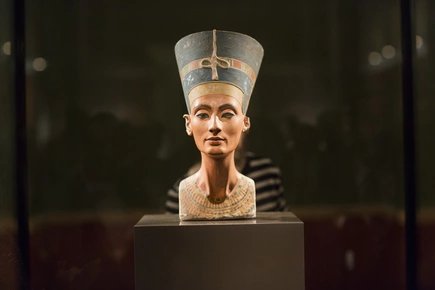
350 lines, written by candlelight in the Villa Waldfrieden in Berlin-Schmargendorf on an autumn night in 1899, according to the author Rainer Maria Rilke: a cult book for generations, especially young people.
Rilke, who was only 23 at the time of writing, uses short scenes to shed light on a life that ended far too soon. A young nobleman falls as a standard-bearer in a 17th-century war on a battlefield in Hungary at the age of just 18.
But the geographical and historical setting is irrelevant, as interchangeable as the war in which the young soldier serves. This long-ago war is as timeless and universal as the young man's fears and dreams, which culminate in a night of love with a countess in a magnificent palace shortly before the decisive battle. T
The first edition of Insel-Verlag's new edition of Rilke's story quickly sold out in 1912, and new ones quickly followed, with a total of around 60 editions to date. The Inselbüchlein became a cult book, selling millions of copies, and laid the foundation for the author's success—and for the success of Insel-Verlag's distinctive book series, which is still collected today and has many fans.
Helmut Mooshammer, a long-time ensemble member at the Deutsches Theater, and pianist Senka Brankovic are taking this event as an opportunity to remember the Austrian composer Viktor Ullmann, his artistic legacy, and his unshakable belief in the power of art.
Already during the First World War, while stationed on the Italian front, Ullmann intensively studied Rainer Maria Rilke's poem "The Love and Death of the Cornet Christoph Rilke." This work, which attempts to capture in lyrical words the tension between a glorious heroic death and senseless dying, accompanied the composer all the way to the Theresienstadt concentration camp. He was deported there in 1942, and there – still believing in the positive in humanity – despite hunger and the great difficulties in coping with camp life, he created a significant portion of his works, which today are an integral part of the canon of musical theater. Interned in the Theresienstadt concentration camp during the Second World War, he set to music the melody of love and death by the cornet Christoph Rilke – before he was murdered there in October of the same year.
The story of the young flag-bearer, who staggers wide-eyed through the horrors of war and ultimately falls with the flag in his hand, has lost none of its linguistic beauty, musical power, and thematic validity to this day.
On November 9th – the fateful day for Germans – it commemorates the connection between art and humanity, which was as vital then as it is today.
Additional information
Participating artists
Helmut Mooshammer (Lesung)
Senka Brankovic (Klavier)
Dates
November 2025
| Mo | Tu | We | Th | Fr | Sa | Su |
|---|---|---|---|---|---|---|
1
|
2
| |||||
3
|
4
|
5
|
6
|
7
|
8
|
9
|
10
|
11
|
12
|
13
|
14
|
15
|
16
|
17
|
18
|
19
|
20
|
21
|
22
|
23
|
24
|
25
|
26
|
27
|
28
|
29
|
30
|



